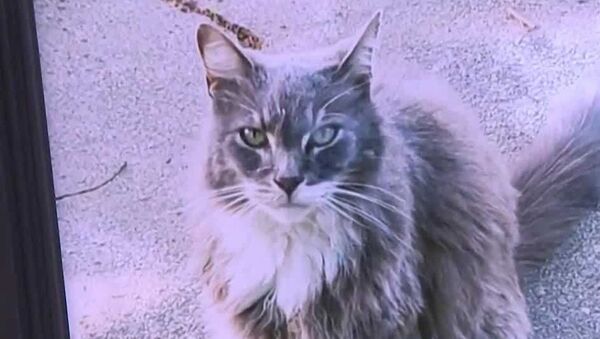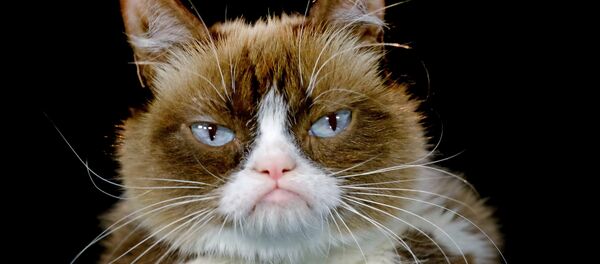While on a walk through their neighborhood on May 22, Sacramento resident Nancy Olson and her son spotted a pair of limbs belonging to animal that had been sliced in half, decapitated and discarded on the front lawn of Choices Charter School.
Upon closer inspection, Olson realized the mutilated creature was none other than her 10-year-old cat Blue.
"It's really hard to wrap your head around seeing your animal chopped in half, and we don't know where the other half of his body was," a distraught Olson told CBS 13 Sacramento.
Olson was able to eventually bury Blue's remains after finding various parts of his body around the neighborhood within a two-week period.
Not even a month before parts of Blue were found on the elementary school lawn, Olson's neighbor Julie Swieciki told the local outlet that she had come across the remains of another cat around the immediate community. "I came across part of a head of a cat, you know the face, and it was on the road," she said.
"A couple months before that I saw a severed cat. Just the bottom half of the cat, and it looks like it was just clean cut," Swiecicki said, bringing the total to three animals.
Both Olson and Swieciki believe these incidents were intentionally carried out by an area person, rather an animal.
"My son did take a picture. There are a couple neighbors down the block that are hunters. They both go, ‘Wow, this is like a machete,'" Olson noted to CBS 13.
While the two women maintain the mutilation acts performed on the cats were simply too clean to be from a coyote, Sacramento County Animal Control begs to differ, arguing the remains are in line with the animal's regular disembowelment process.
"We're in cub rearing season right now, and cubs go out and about, and they do kill cats, and it looks like a human could do it. They may slice them horizontally or diagonally. They could decapitate them. They could cut them in half," animal control spokesperson Janna Haynes revealed to Fox 40.
The organization went on to advise that pets, especially smaller animals, be kept inside at night during the coyote's "cub rearing season," which begins around mid-April and heightens in early summer, according to The Urban Coyote Initiative.





